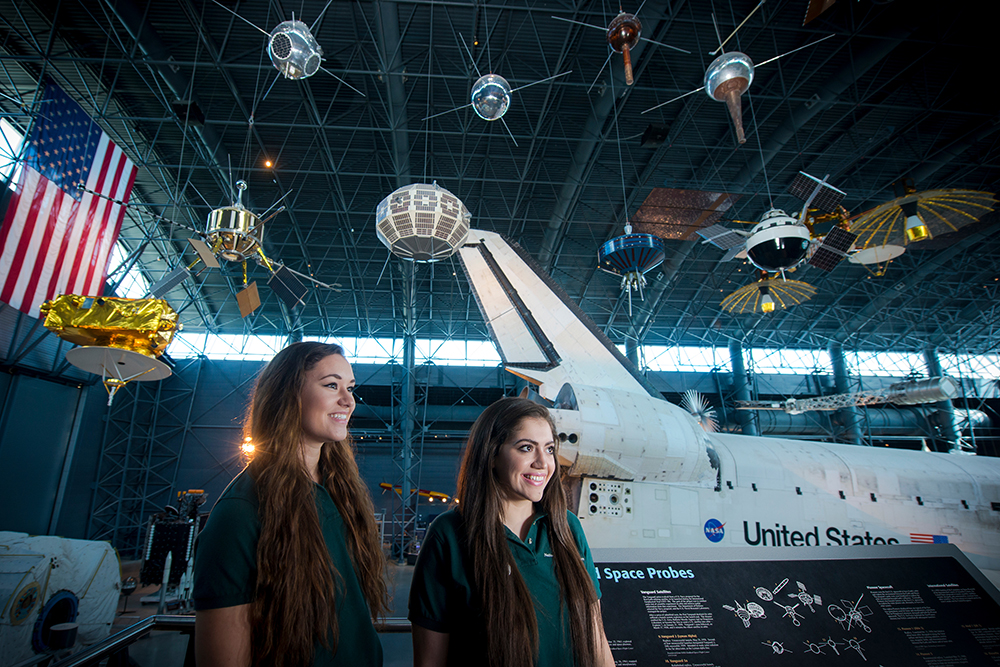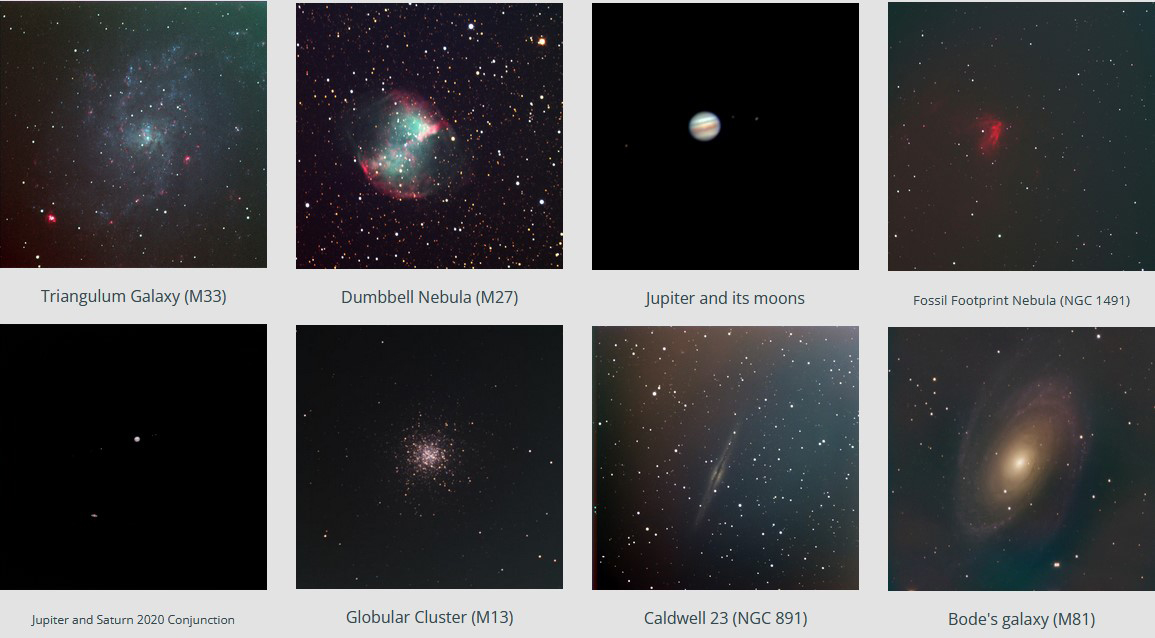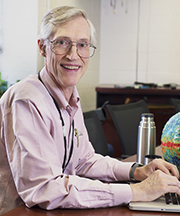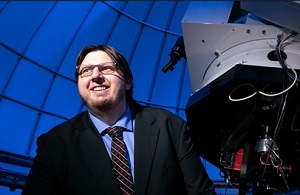Summer 2023
Department of Physics and Astronomy
College of Science and Schar School of Policy and Government
George Mason University
Location: Virtual
Course Dates: June 17th – July 15th, 2023
Time:
- Five Saturdays: both synchronous and asynchronous virtual meetings Noon to 2:00pm EST; 9:00am - 11:00am PST.
- Group observation nights - Explore the universe by remotely or in-person controlling the telescope from George Mason University Observatory.
Registration Fee:
- Please download the Five-Week Young Astro-Scholars Internship: Astronomy Data Analysis and Space Research for NASA Missions application and email execed@gmu.edu for program fees.
- Need-based scholarships are available.
Certification: Students who successfully finish the program will receive a Young Astro-Scholars Research Program Certificate of Completion from George Mason University.

Program Summary
This interactive High School Astronomy Data Analysis on NASA missions internship program combines science, technology, engineering, and mathematics learning experience. We encourage students interested in STEM-related research to join us this summer. Students who participate in the program will study astronomy and space sciences research projects and course work and have the opportunity to explore the universe by remotely controlling the telescope from George Mason University Observatory. We will provide several evening space observation sessions during the internship program. Besides virtual tours of GMU Department of Physics and Astronomy and George Mason University Observatory, students will also have the opportunity to participate in panels with exoplanet and astronomy experts from NASA and around the world.
Dr. Peter Plavchan will be the primary instructor to lead and work with teams of scientists from around this world to search for other worlds, or exoplanets, including those that are potentially habitable and Earth-like. The National Academies of Science, Engineering and Medicine once a decade survey of astrophysics has recommended a future NASA flagship mission to directly image and characterize the nearest Earth-like worlds to the Sun. This mission will launch in the 2040s, nd the “billion dollar question” is whether or not we will know beforehand which stars host these Earth-like worlds, or if this mission will also have to search for them. Thirty years ago, the existence of other worlds was science fiction, and today over 5000 other worlds are known, many unlike anything in our Solar System. Dr Plavchan will teach you how we find these worlds, what we know about them, and how we will find “Earth 2.0”. Learn more about Peter’s research group here: https://sites.google.com/view/gmuexoplanets/home and watch students are exploring the Universe from The George Mason University Observatory here: https://sites.google.com/view/gmuexoplanets/research?authuser=0
During this program, students will be participating in a guided astronomy-based research project applying some of the following methods, including but not limited to:
- Astronomy data analysis on NASA missions
- Observational astronomy and statistical analysis.
- Quantitative Research
- Scientific methods of inference
- Observational data collection and management
- Statistical science inference
- The private space revolution and its impact upon astronomy and space policy
By using the following software and data for research:
- Python
- Jupyter notebooks
- Github
- AstroImageJ
- Observational Astronomy Data Analysis
- FITS files (astronomy imaging data format)
- Statistical analyses such as measurement error, time-series analysis, reduced chi-squared, rms and standard deviation.
Objects Captured by Students Using Our Equipment


Program Goals
- Introduce students to higher education lab research practice
- Support student career paths by providing hands on research experience
- Expand student knowledge on a variety of research tools and applications that are used in research in the biomedical context
- Explore connections between science and policy in space
Program Benefit
- Gain confidence and prepare for transition to college life
- Receive instruction on practical research skills
- Gain valuable teamwork experience and explore possible career paths
- Develop and refine skills for resume
- Network with professionals in the field
Keynote Speakers

The Honorable Charles F. Bolden Jr.
Major General, United States Marine Corps (Ret.)
12th NASA Administrator
Founder & CEO Emeritus, The Charles F. Bolden Group
Retired Marine Corps Major General Charles Frank Bolden Jr. was the Administrator of the National Aeronautics and Space Administration (NASA) from July 2009 until January 2017.
Bolden’s 34-year career with the Marine Corps included 14 years as a member of NASA’s Astronaut Office. After joining the office in 1980, he traveled into orbit four times aboard the space shuttle between 1986 and 1994, commanding two of the missions and piloting two others.
Today, in addition to his numerous professional affiliations, General Bolden serves as the Founder and CEO Emeritus of The Charles F. Bolden Group, providing leadership in the areas of Space/Aerospace Exploration, National Security, STEM+AD Education and Health Initiatives.
Bolden is a graduate of C.A. Johnson High School in Columbia, SC. He earned a Bachelor of Science degree from the U.S. Naval Academy and a Master of Science degree from the University of Southern California.
Bolden is married to the former Alexis Walker of Columbia, SC. They have two children, A. Che’ Bolden, Colonel, USMC (Ret.) and Dr. Kelly M. Bolden, MD, FACS; and four grandchildren – granddaughters Mikaley, Kyra and Talia and grandson Walker Elias.

Dr. John C Mather
Senior Astrophysicist and Goddard Fellow
Senior Project Scientist, James Webb Space Telescope
Goddard Space Flight Center, NASA
Dr. John C. Mather is a Senior Astrophysicist in the Observational Cosmology Laboratory at NASA's Goddard Space Flight Center. His research centers on infrared astronomy and cosmology. As an NRC postdoctoral fellow at the Goddard Institute for Space Studies (New York City), he led the proposal efforts for the Cosmic Background Explorer (74-76), and came to GSFC to be the Study Scientist (76-88), Project Scientist (88-98), and also the Principal Investigator for the Far IR Absolute Spectrophotometer (FIRAS) on COBE. He showed that the cosmic microwave background radiation has a blackbody spectrum within 50 ppm. As Senior Project Scientist (95-present) for the James Webb Space Telescope, he leads the science team, and represents scientific interests within the project management. He has served on advisory and working groups for the National Academy of Sciences, NASA, and the NSF (for the ALMA, the Atacama Large Millimeter Array, and for the CARA, the Center for Astrophysical Research in the Antarctic). He has received many awards including the Nobel Prize in Physics, 2006, for his precise measurements of the cosmic microwave background radiation using the COBE satellite.
About the Instructor

Dr. Peter Plavchan is an Associate Professor of Physics and Astronomy at George Mason University, and the Director of the George Mason University Observatories. He earned his undergraduate degree in Physics at Caltech in 2001, his PhD from UCLA in 2006, and he has held appointments at the NASA Exoplanet Science Institute at Caltech, Missouri State University, and a visiting appointment at the University of Pennsylvania.
Dr. Plavchan is an observational exoplanet astronomer, with a focus on the formation and demographics of planets around cool dwarfs, utilizing the radial velocity and transit detection methods. He is the PI of a NASA Probe Mission concept called EarthFinder and two pending NASA CubeSat mission proposals, is a Co-PI of the MINERVA and MINERVA-Australis telescope arrays, regularly uses the NASA Transiting Exoplanet Survey Satellite and NASA Infrared Telescope Facility iSHELL spectrometer for exoplanet discovery, has served as an Executive Committee member of the NASA Exoplanet Program Analysis Group (ExoPAG), and has received multiple NASA Group Honor Achievement Awards. His research is currently supported by NASA, NSF, and the Mt. Cuba Astronomical Foundation, and his work has appeared in numerous local and national publications and media including CNN and Fox News.
